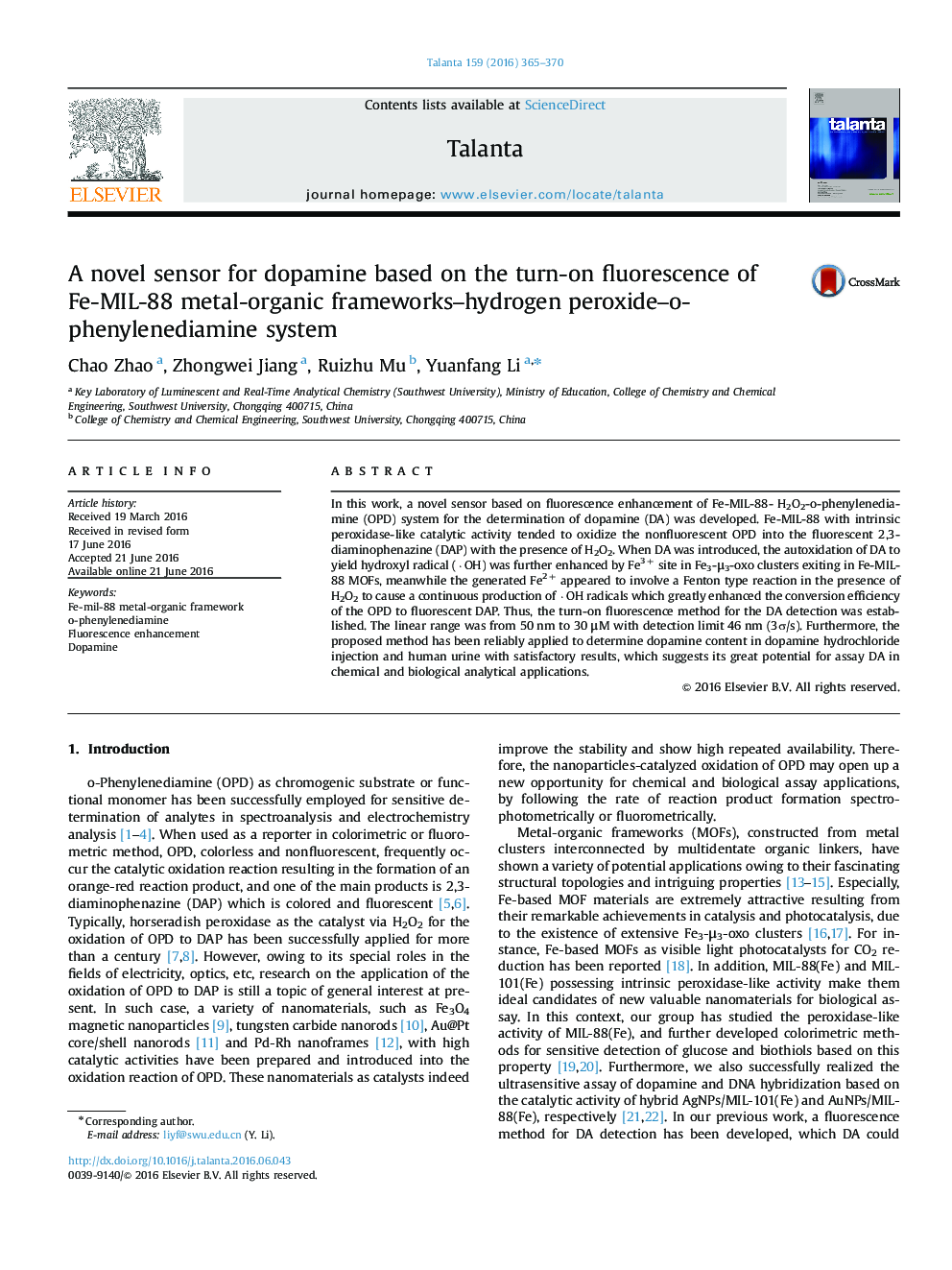| Article ID | Journal | Published Year | Pages | File Type |
|---|---|---|---|---|
| 1241786 | Talanta | 2016 | 6 Pages |
•Fe-MIL-88 was first used to catalytic oxidation of o-phenylenediamine to 2,3-diaminophenazine with the presence of H2O2.•The method subtly took advantage of the synergistic catalytic effect of Fe-MIL-88, H2O2 and DA through a Fenton-like reaction.•The method was successfully applied for dopamine detection in dopamine hydrochloride injection and human urine.
In this work, a novel sensor based on fluorescence enhancement of Fe-MIL-88- H2O2-o-phenylenediamine (OPD) system for the determination of dopamine (DA) was developed. Fe-MIL-88 with intrinsic peroxidase-like catalytic activity tended to oxidize the nonfluorescent OPD into the fluorescent 2,3-diaminophenazine (DAP) with the presence of H2O2. When DA was introduced, the autoxidation of DA to yield hydroxyl radical (·OH) was further enhanced by Fe3+ site in Fe3-μ3-oxo clusters exiting in Fe-MIL-88 MOFs, meanwhile the generated Fe2+ appeared to involve a Fenton type reaction in the presence of H2O2 to cause a continuous production of ·OH radicals which greatly enhanced the conversion efficiency of the OPD to fluorescent DAP. Thus, the turn-on fluorescence method for the DA detection was established. The linear range was from 50 nm to 30 μM with detection limit 46 nm (3σ/s). Furthermore, the proposed method has been reliably applied to determine dopamine content in dopamine hydrochloride injection and human urine with satisfactory results, which suggests its great potential for assay DA in chemical and biological analytical applications.
Graphical abstractDopamine can improve the conversion efficiency of the nonfluorescent o-phenylenediamine to the fluorescent 2,3-diaminophenazine catalyzed by Fe-MIL-88–H2O2 system to fabricate a turn-on fluorescence method for the DA detection.Figure optionsDownload full-size imageDownload as PowerPoint slide
